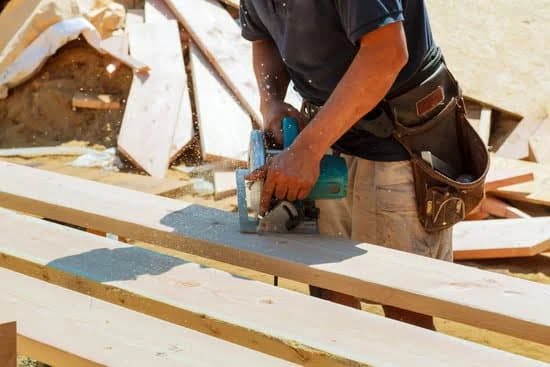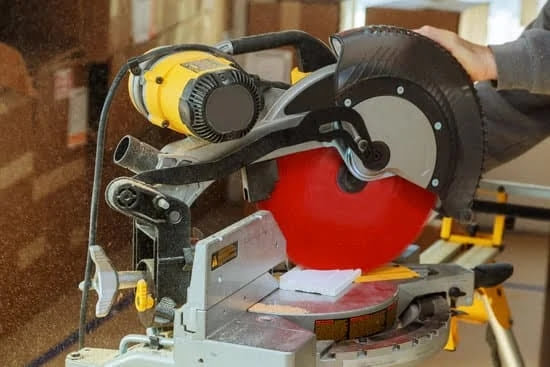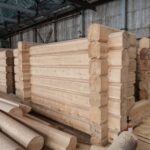The woodworking Japanese saw has long been a game-changer for woodworking enthusiasts, offering a combination of precision, versatility, and unparalleled craftsmanship. With a rich history rooted in traditional Japanese carpentry techniques, these saws have become increasingly popular among woodworkers worldwide. In this section, we will delve into the fascinating origins of Japanese saws and explore the key advantages they offer over other types of saws.
Japanese saws are notably different from their Western counterparts in several ways. One distinctive feature is their pull-cut design, where the teeth are set to cut on the pull stroke rather than the push stroke. This unique cutting action allows for finer control and more accurate cuts, minimizing splintering and maximizing efficiency. Furthermore, Japanese saws have thinner and narrower blades compared to Western saws, making them ideal for intricate work or cutting smaller materials.
Another advantage of Japanese saws lies in their wide variety of types suited for specific woodworking tasks. From rip saws designed for cutting along the grain to crosscut saws perfect for making clean perpendicular cuts, there is a specialized Japanese saw available for every purpose.
The dozuki excels in precision joinery with its thin blade and fine teeth, while the ryoba offers dual-sided teeth for both ripping and crosscutting tasks. This diversity ensures that woodworkers can find the perfect tool to meet their project requirements.
When it comes to choosing the right Japanese saw for your woodworking projects, several factors need to be considered. Tooth size, blade length, handle type – all play a crucial role in selecting the optimal tool for your needs. It’s important to match these attributes with your individual preferences as well as project demands. By doing so, you can unlock the full potential of these extraordinary tools and elevate your woodworking skills to new heights.
In subsequent sections of this article, we will further explore the different types of Japanese saws available in the market and discuss their uses in detail. We will also provide tips for using Japanese saws effectively and safely, as well as guidelines for maintenance and sharpening.
Additionally, we will introduce reputable Japanese saw brands known for their exceptional craftsmanship and quality, along with reviews and recommendations from satisfied customers. So let’s dive deeper into the world of Japanese saws and discover the game-changing possibilities they offer to woodworking enthusiasts.
Types of Japanese Saws and Their Uses
Japanese saws come in various types, each designed for specific woodworking tasks. Understanding the different types of Japanese saws available in the market and their ideal uses is essential for woodworking enthusiasts. By choosing the right type of Japanese saw for a particular project, craftsmen can achieve precise and efficient cuts.
One common type of Japanese saw is the ryoba. The ryoba is a double-edged saw with different tooth configurations on each side. One side features crosscut teeth while the other has rip teeth. This versatile design allows woodworkers to make both crosscuts and rip cuts without changing tools. The ryoba is ideal for general woodworking tasks, offering versatility and efficiency.
Another type of Japanese saw is the dozuki, often used for joinery work and precision cuts such as dovetails or tenons. The dozuki has a thin blade with a stiff back that prevents it from bending during cuts, ensuring exceptional accuracy. It also features fine teeth, making it suitable for cutting through small and delicate materials.
For more demanding rip-cutting tasks, the kataba saw is an excellent choice. This single-edged saw has larger teeth designed specifically for ripping through thick sections of wood quickly. The kataba’s large teeth also reduce clogging, making it highly effective for long rip cuts.
| Type of Japanese Saw | Ideal Uses |
|---|---|
| Ryoba | Versatile: crosscuts and rip cuts |
| Dozuki | Precision cuts: joinery work, dovetails, tenons |
| Kataba | Rip cuts: thick sections of wood |
Choosing the right type of Japanese saw for a woodworking project depends on factors such as the desired cut, the type of wood being used, and personal preferences. It is recommended to have a variety of Japanese saws in the workshop to tackle different tasks efficiently.
Choosing the Right Japanese Saw for Your Woodworking Projects
When it comes to Japanese saws, there is a wide range of options available in the market. Each type of Japanese saw has its unique characteristics and is designed for different woodworking tasks.
Choosing the right Japanese saw for your woodworking projects is crucial to ensure optimal performance and achieve accurate results. In this section, we will discuss the factors to consider when selecting a Japanese saw, recommend the best saws for different woodworking tasks, and highlight the importance of selecting suitable tooth size, blade length, and handle type based on individual preferences and project requirements.
Factors to Consider when Selecting a Japanese Saw
Before purchasing a Japanese saw, it is important to consider several factors to ensure that you choose the right one for your needs. First, consider the type of woodworking task you will be undertaking. Different saws are designed for specific purposes such as joinery or carpentry. Understanding your specific project requirements will help you choose a saw that is suited to those needs.
Additionally, it is important to consider tooth size, blade length, and handle type. Tooth size refers to the number of teeth per inch on the blade and can vary depending on the type of cut you need to make. A higher tooth count is ideal for finer cuts while a lower tooth count is better suited for rougher cuts.
Blade length should be chosen based on the thickness of the material you work with most frequently. Finally, selecting a handle type that provides comfort and control is essential for long hours spent working with the saw.
Best Saws for Different Woodworking Tasks
Different woodworking tasks call for different types of Japanese saws. For joinery work such as dovetailing or tenoning, a dozuki saw would be an excellent choice due to its thin blade which allows for precise cuts without excessive tearing or splintering.
Carpenters who frequently make crosscuts and rip cuts would benefit from using a ryoba saw, which has both rip and crosscut teeth on the same blade. Fine woodworking enthusiasts may prefer a kataba saw for its versatility in various cutting positions.
It is important to note that the best Japanese saw for your projects ultimately depends on your personal preferences and project requirements. It may be beneficial to try out different types of Japanese saws before committing to one.
Some woodworkers find that having a few different types of Japanese saws in their arsenal allows them to tackle a wider range of tasks with ease. Remember, the key is to choose a saw that feels comfortable in your hand and allows you to achieve the desired results.
By carefully considering your woodworking tasks, tooth size, blade length, and handle type, you can select the right Japanese saw that will support you in achieving precise cuts and enhancing your woodworking experience.
Proper Techniques for Using a Japanese Saw
Using a Japanese saw properly is key to achieving accurate and clean cuts in your woodworking projects. While these saws may differ from other types of saws, mastering the proper techniques can greatly enhance your woodworking experience. In this section, we will provide a step-by-step guide on how to use a Japanese saw effectively and safely.
- Gripping and Positioning: When using a Japanese saw, it is important to hold it properly to maintain control and stability. Place one hand on the handle while using your index finger to guide the blade. The other hand should be positioned on top of the blade, applying slight downward pressure to keep it in contact with the workpiece.
- Cutting Motion: Unlike Western-style saws that rely on push strokes, Japanese saws excel in pull strokes. Begin by positioning the saw at the starting point of your cut and apply gentle pressure as you pull back towards yourself. Maintain a steady rhythm throughout the cut, avoiding excessive force.
- Techniques for Accuracy: For precise cuts, it is essential to establish a clear cutting line before initiating the cut. You can either use a pencil or make small incisions with the tip of your saw. Take time to align the blade along this line, ensuring that it remains perpendicular to the workpiece for accurate results.
- Avoiding Excessive Force: One common mistake beginners make when using Japanese saws is applying excessive force while cutting. Remember that these saws are designed to work efficiently with minimal force due to their thin blades and sharp teeth arrangement. Let the saw’s sharpness and design do most of the work for you.
By following these techniques, you will be able to make precise cuts effortlessly with your Japanese saw. It is important to note that practice makes perfect when it comes to mastering these techniques, so don’t be discouraged if you don’t get it right away. With time and experience, you’ll become more comfortable and proficient in using a Japanese saw for your woodworking projects.
Maintenance and Sharpening of Japanese Saws
Japanese saws are known for their exceptional cutting ability and precision, but like any tool, they require regular maintenance and sharpening to ensure optimal performance. Proper care and upkeep of your Japanese saw will not only prolong its lifespan but also maintain the quality of your woodworking projects.
In this section, we will discuss the importance of maintenance and sharpening for Japanese saws, provide tips for cleaning and maintaining them, as well as guide you on how to sharpen your saw at home or where to find professional sharpening services.
The Importance of Regular Maintenance and Sharpening
Regular maintenance is essential for keeping your Japanese saw in top condition. Accumulated dust, dirt, and wood particles can affect the cutting performance by hindering the smooth movement of the teeth through the wood. Additionally, sap can build up on the blade, leading to rust if left uncleaned. By regularly cleaning your saw, you can prevent these issues and ensure consistent cutting efficiency.
Sharpening your Japanese saw is just as crucial as regular maintenance. Over time, the teeth of the saw will become dull from repeated use. A dull blade not only increases effort when cutting but also produces rougher cuts and splintered wood surfaces. Sharpening the teeth restores their sharpness, allowing for smoother cuts with less effort.
Tips for Cleaning and Maintaining Japanese Saws
Cleaning a Japanese saw requires minimal effort but should be done after each use or periodically depending on how frequently you use it. Start by removing any dust or debris by brushing it off gently using a non-abrasive brush or an old toothbrush. Take care not to bend or damage the teeth during this process.
Next, wipe down the blade with a soft cloth or towel dampened with denatured alcohol or warm soapy water to remove any residual sap or stubborn grime that may have built up over time. Dry it thoroughly before storing to avoid moisture causing rust.
Store your Japanese saw in a protective case or wrap it in a cloth to prevent dust and moisture from settling on the blade. Avoid storing it in damp areas or places where it may be subject to extreme temperatures.
Sharpening Japanese Saws
While some woodworkers prefer to sharpen their saws themselves, others may prefer professional sharpening services. If you are comfortable sharpening the saw yourself, invest in a proper saw file or diamond file designed for Japanese saw teeth. Follow the manufacturer’s instructions and maintain consistent filing angles across the teeth. Take your time and pay attention to each tooth individually, ensuring they are sharpened evenly.
If you prefer professional sharpening services, do some research to find reputable providers experienced with Japanese saws. They will have the necessary tools and expertise to ensure your saw is sharpened accurately without compromising its integrity.
Regular maintenance and sharpening will keep your Japanese saw performing at its best, allowing you to achieve precise and clean cuts in your woodworking projects. By dedicating time and effort into caring for your tool, you can maximize its lifespan and enjoy the benefits of using a well-maintained Japanese saw for years to come.
Common Mistakes to Avoid When Using a Japanese Saw
When using a Japanese saw for woodworking, it is important to be aware of common mistakes that beginners often make. By being mindful of these errors, woodworkers can ensure a smoother and more efficient sawing experience. This section will highlight some of the most common mistakes to avoid when using a Japanese saw and provide practical solutions and tips to overcome them.
One frequent mistake that beginners make is blade binding. Blade binding occurs when the saw blade becomes stuck in the cut due to excessive pressure or an incorrect angle. To avoid this, it is crucial to maintain a steady rhythm while sawing and apply consistent but gentle pressure. Additionally, ensuring that the blade is properly aligned with the intended cut can prevent the blade from becoming wedged in the wood.
Another mistake that people often make is using an incorrect blade angle. Japanese saws are designed to cut on the pull stroke, which means that the cutting action occurs as the user pulls back towards themselves. It is essential to hold the saw at a proper angle (typically between 30-45 degrees) to maximize efficiency and achieve clean cuts. Practicing with scrap wood before starting a project can help develop a feel for the correct angle.
Improper use of pressure is another common mistake when using Japanese saws. Applying excessive force while sawing not only fatigues the user but also increases the risk of bending or breaking the blade. Instead, woodworkers should focus on maintaining a light grip on the handle and allowing the sharpness of the teeth to do most of the work. Finding a balance between controlling and guiding the saw without exerting unnecessary force will result in smoother and more accurate cuts.
By understanding these common mistakes and implementing preventative measures, woodworkers can optimize their use of Japanese saws and enhance their overall woodworking experience.
| Mistake | Solution/Tips |
|---|---|
| Blade binding | Maintain a steady rhythm; apply consistent but gentle pressure; ensure proper alignment with the cut |
| Incorrect blade angle | Hold the saw at a proper angle (30-45 degrees); practice on scrap wood to develop a feel for the correct angle |
| Improper use of pressure | Maintain a light grip on the handle; let the sharpness of the teeth do most of the work; avoid excessive force |
Reviews and Recommendations of High-Quality Japanese Saw Brands
Japanese saws are renowned for their exceptional craftsmanship and quality. There are several reputable Japanese saw brands that woodworkers can rely on to deliver outstanding performance and precision. These brands have gained popularity among professionals and enthusiasts alike, earning positive reviews and recommendations. Here are some of the top Japanese saw brands, along with their unique features:
- Gyokucho: Gyokucho is a well-known brand that offers a wide range of high-quality Japanese saws. Their saw blades are made from the finest steel and feature razor-sharp teeth that provide clean and precise cuts. One of their popular models is the Ryoba Double Edge Saw, which has a double-sided blade with different tooth configurations on each side, allowing for both rip cuts and crosscuts.
- Suizan: Suizan is another reputable brand that is highly regarded for its craftsmanship. They offer a variety of saws, including Dozuki, Kataba, Ryoba, and more. Suizan saws are known for their ergonomic handles that provide a comfortable grip during long hours of woodworking. The blades are made from high carbon steel and undergo a special heat treatment process to ensure durability.
- Shogun: Shogun is a leading manufacturer of traditional hand tools in Japan, including Japanese pull saws. Their saws feature sharp blades made from high-quality steel that can effortlessly cut through different types of wood. Shogun offers various models such as Ryoba Crosscut Saws and Kataba Universal Saws, catering to different woodworking needs.
- Z-Saw: Z-Saw is recognized for producing premium Japanese hand tools. Their saw lineup includes Dozuki, Kataba, Ryoba, and more. Z-Saw takes pride in their attention to detail when crafting each tool while using only the best materials available.
These Japanese saw brands have garnered positive reviews not only for their outstanding quality but also for their longevity. Woodworkers appreciate the precision cuts these saws provide, making them an excellent choice for intricate woodworking projects. When considering purchasing a Japanese saw, it is advisable to read customer reviews and do thorough research to find the best fit for individual needs and preferences.
Woodworking Projects where a Japanese Saw Excels
Japanese saws are renowned for their precision and versatility, making them invaluable tools for various woodworking projects. Whether you are a beginner or an experienced woodworker, incorporating a Japanese saw into your arsenal can elevate the quality of your work. Here are some specific woodworking projects where a Japanese saw excels:
- Precision Joinery: One area where Japanese saws truly shine is in precision joinery. Their thin kerf and fine teeth allow for clean and accurate cuts, making them ideal for creating tight-fitting joints such as dovetails, tenons, and mortise and tenon joints. The ability to make precise cuts enables woodworkers to achieve a higher level of craftsmanship in their furniture making or cabinetry projects.
- Fine Detail Work: Japanese saws excel at intricate and delicate cuts, making them the go-to choice for fine detail work. Whether it’s cutting small notches or intricate curves, the thin blades and flexible nature of these saws enable woodworkers to navigate tight spaces with ease. This makes them perfect for tasks like shaping or sculpting wood in carving or marquetry projects.
- Cutting Smaller and Delicate Materials: Traditional Western-style saws may struggle when cutting smaller or delicate materials due to their aggressive tooth geometry. Japanese saws, on the other hand, have finer teeth that produce smoother cuts without causing excessive tear-out or splintering on delicate woods or veneers. This makes them well-suited for tasks like working with hardwood dowels or trimming fragile veneers.
Conclusion
In conclusion, the Japanese saw offers woodworking enthusiasts a game-changing tool that combines versatility and precision. With its unique characteristics and history dating back centuries, the Japanese saw has proven to be superior to other types of saws in many ways.
By exploring the different types of Japanese saws available in the market, woodworkers can find the perfect tool for their specific needs. Each type serves a purpose and excels in certain tasks, such as rip saws for fast and efficient cutting, crosscut saws for clean and accurate cuts, dozuki for precise joinery work, and ryoba for versatility in both rip and crosscuts. By understanding the features and benefits of each type, woodworkers can make informed decisions when choosing their tools.
Selecting the right Japanese saw for woodworking projects is crucial. Factors to consider include tooth size, blade length, and handle type based on individual preferences and project requirements. By carefully evaluating these factors, woodworkers can ensure they have the most suitable tool to achieve optimal results.
While using a Japanese saw may require some practice and technique adjustments compared to other types of saws, it offers unparalleled precision and control once mastered. By following proper techniques like correct gripping and positioning of the saw, maintaining a steady rhythm, and avoiding excessive force while sawing, woodworkers can achieve accurate cuts with ease.
Regular maintenance and sharpening are essential for maintaining optimal performance with a Japanese saw. Woodworkers should prioritize keeping their tools clean and follow proper sharpening techniques either at home or through professional services.
Lastly, embracing the versatility and precision of a Japanese saw opens up opportunities for woodworking projects that require fine detail work or cutting smaller delicate materials. Precision joinery work is made easier with these tools as well. It is important for readers to explore and experiment with Japanese saws in their woodworking journey while continuously learning and practicing to master this art form.
In summary, by embracing the versatility and precision offered by Japanese saws, woodworking enthusiasts can elevate their craft to new heights. The advantages of using a Japanese saw are undeniable, from its unique characteristics and history to its ability to excel in specific woodworking tasks.
By investing in high-quality Japanese saw brands and continuously learning and practicing proper techniques, woodworkers can achieve remarkable results in their projects. Embrace the Japanese saw and unlock its potential for success in your woodworking journey.
Frequently Asked Questions
Are Japanese pull saws any good?
Japanese pull saws are highly regarded and considered to be very good tools for woodworking. They have gained popularity among professionals and hobbyists around the world due to their superior cutting ability, efficiency, and precision. The design of these saws allows them to cut on the pull stroke instead of traditional Western push strokes.
This pulling action, combined with the thin kerf and sharp teeth, ensures a clean and accurate cut with minimal effort. The high-quality steel used in Japanese saws also contributes to their excellent performance and durability.
What are the names of Japanese saws?
Japanese saws come in various types, each designed for specific purposes. One commonly known type is the “ryoba,” which means double edge or two-sided blade saw. It has teeth on both edges, typically with different tooth sizes on each side, allowing for versatility in cutting different materials.
Another popular type is the “dozuki,” characterized by its single-edged blade with a stiffening back strip known as a “kataba.” This type of saw excels at precise crosscuts and joinery work due to its fine teeth and rigid backing strip. Additionally, there are other specialized Japanese saws like the “kugihiki” (flush-cutting saw), “nokogiri” (rip-cutting saw), and “mawashibiki” (large panel or curved cutting saw), each serving specific woodworking needs.
What is a Japanese saw good for?
Japanese saws are well-suited for a wide range of woodworking tasks due to their unique design and characteristics. These saws excel at making precision cuts in various materials such as hardwoods, softwoods, laminates, bamboo, or even delicate veneers without causing tear-out or splintering that can occur with traditional Western-style push strokes. The thin kerf created during cutting reduces waste material while keeping effort required to a minimum.
Furthermore, Japanese pull saws offer better control since they cut on the pull stroke by utilizing the natural pulling action of the user. This, combined with their sharp teeth and superior cutting angles, makes them ideal for tasks such as joinery work, dovetailing, tenon cutting, flush cutting, trimming, or any task that demands accuracy and a clean finish. Moreover, the lightweight and ergonomic design of Japanese saws make them comfortable to use for extended periods without causing fatigue.

Hi everyone! I’m a woodworker and blogger, and this is my woodworking blog. In my blog, I share tips and tricks for woodworkers of all skill levels, as well as project ideas that you can try yourself.





